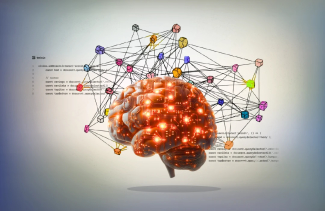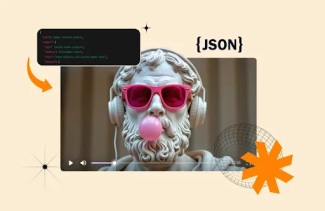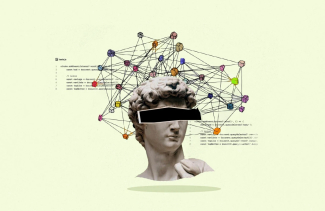
Advertisements are peppered with the wonders of software implmented “in the cloud.” Commercials are speaking of the wonders of big data and analytics. They talk of the innovation in volumes, but what exactly is “the cloud?"
In simple terms, cloud computing is the use of powerful remote servers to access files, house databases, and share software. It is a computer that can be accessed from a local machine via the internet. Its benefits include access to powerful machines, not having to install costly hardware, and costing that fits your use case.
Cloud is scalable, robust, and cost-efficient. Cloud technology is beneficial for app development, using the cloud for custom application development has proven to be superior. We are just beginning to witness the evolution of this concept into a revolution. Cloud computing changes the way we think about data, the way businesses think about their operations, and the way engineers think about building.
Latest Cloud Computing Trends of 2023
Cloud computers and cloud security services are here to stay and here are the latest trends which need to be followed:
1. Serverless Computing
Part of the evolution in cloud computing has seen the rise in popularity of serverless computing as one of the rising tech trends.
In early cloud development, servers were rented by server space that was predetermined. Any overage or underage resulted in waste at the expense of the company that rented it.
In comes a serverless model, which features a common structure that employs a “pay-as-you-go” structure. These plans are more flexible and allow companies to have more control over their expense on cloud hosting.
With companies like Amazon and their AWS model, this structure will continue to trend upward.
2. Hybrid Cloud
The hybrid cloud concept provides additional flexibility to companies that maintain their cloud-based system. The “hybrid” definition stems from the use of both public and private cloud within one architecture.
Companies can manage their private cloud for sensitive applications and data, and use the public cloud for other computing tasks.
The benefits of this system allow custom scalability when demand requires it, but not before. Any spike in resources and the public cloud can increase its output to accommodate it.
Security is also a benefit as companies do not need to house all their sensitive data in a public server. They can keep it in-house, guarded by their security features. With more and more companies using their enterprise mobile infrastructure it is vital that a cloud system supports it.
3. Kubernetes
Creation of Google, Kubernetes have gained steam in recent years. Kubernetes are cloud technology used to manage container-based systems.
It is an open-source, Linux-based, platform that clusters groups of containers and provides management for the cluster. These clusters can cover public, private, and hybrid clouds.
With the rise of container-based architecture, tools like Kubernetes will become more and more prominent as the years go by.
4. Career Growth
The cloud explosion has opened the door to substantial career growth in computer science. Demand is growing at an accelerated pace considering there are several best mobile application development companies that have started to offer cloud services. While the career is difficult to break into, the median salary of a cloud computing professional hit $146,350 in the year 2018 and has been increasing till date with annual earners, earning up to $175,000 per year.
There is a wide range of jobs available in this sector, each with many responsibilities. You can find jobs like:
- Cloud Engineer
- Cloud Architect
- Cloud Application Developer
- Cloud Administrator
Those with skills in technologies like AWS, Java, and Microsoft Azure have a tremendous outlook moving forward in 2023.
5. Artificial Intelligence

For all these cloud-based trends, perhaps none is more trendy or life-changing than Artificial Intelligence (AI).
The gravity of AI is far beyond one simple article. The biggest companies in the world are leading the charge in the utilization of this technology. Countless hours and learning spent on developing this concept.
Artificial Intelligence, the concept of computers algorithmically solving problems using data, is centrally reliant on cloud computing. The datasets are too vast for simple computing solutions. The models scale too large; cloud computing systems are vital to this technology.
6. Microservices
Microservices is an approach to create architectures using small-services that are well-connected using APIs. These are created as independent components using lightweight APIs. Microservices are built to perform a solo function for businesses. Each of these services can be independently run, can be updated, developed, and scaled.
Below are certain benefits of microservices:
- Shorter development cycles because of high agility.
- Microservices are easy to deploy.
- Enables usage of tools of choice.
- It allows scalability of the environment.
- It allows code reusability.
- System doesn’t crash when a single service fails unlike monolithic services.
It is one of the most followed technologies in cloud computing as it enables organizations to create services faster. Microservices provide a scalable solution that can be customized as per requirements enabling more freedom to cloud architects.
7. DevOps
DevOps basically allow constant integration of updates onto a build. By implementing DevOps methodology, the practitioners are making sure that the developers team and the operations team work hand-in-hand.
It allows smoother integration of new features onto the system considering the developer’s team deploy the code and the operations team manage it. Also, the cloud architecture enables continuous integration/continuous delivery of code. It is an engineering practice that is well-suited to the development of cloud architecture.
DevOps enable access to hardware resources in a scalable manner. With this, the developers are easily able to build, test, and deploy in updates. This is the reason why the technology is adopted heavily by the best mobile application development companies. It makes the DevOps team a lot more efficient by helping them use virtualization and containerization with capability to test in similar environments to real-situation. This is another cloud computing trends in 2023 that is rapidly being adopted in the industry.
8.Disaster Recovery
Speaking about one of the most pursued cloud computing trends in 2023 is cloud disaster recovery. Just like real-life, there are emergencies in cloud environments when often the critical data is lost. For this reason, disaster recovery has been created to keep the services running even after important data is lost.
To do that as per disaster recovery, images are stored of the environment that includes the operating system, applications, patches, and data. This image is created to wait and deploy whenever a disaster happens. It is amongst the technologies in cloud computing that has aided more to its higher adoption rate.
9. Multi and Hybrid Cloud Solution
Often used interchangeably, both of these architectural approaches are being adopted widely and easily make the list of the best technologies in cloud computing. However, there is a difference between the two. For instance, Multi-cloud solutions use multiple public cloud services that are often from different vendors i.e AWS and Azure. It allows organizations to create a cheaper build and select cloud service based on the value proposition they provide for creating a particular functionality.
On the other hand, a hybrid-cloud has a private cloud service owned by organizations that are connected to several public cloud services. This is done to achieve business goals. As per Gartner, over 30% of services without cloud in large enterprises will require justification. It goes to say that almost half of the organizations that use cloud in their enterprise will use a cloud-first approach. All this, clearly points towards the popularity of this latest technology in cloud computing in 2023.
10. Cloud Security and Resilience
Cloud security is one of the hottest future trends in cloud computing of 2023. As per Gartner, cloud security will attain 26.8% growth rate in 2023. This growth will be influenced because of three factors i.e.
Increase in the number of hybrid and remote work in organizations.
Transition to zero trust network access (ZTNA) from VPNs (Virtual Private Networks).
Increase in the adoption of delivery models based on cloud.
A PWC’s report estimates the number of serious attacks to be 38% in the year 2023. This is the reason a majority of CXOs have revealed that it is important to implement a cloud security strategy in place.
11. Secure Access Server Edge (SASE)
“SASE” was first reported by Gartner in their report of 2019, and later on expanded in 2021. With the increase in the number of remote resources, SaaS services, movement of data from data centers to cloud, more traffic, and multiple branch offices etc, there was a need for a new security strategy in place.
Enter SASE i.e. pronounced as “SASSY”. It converges a wide area network (WAN) into a single cloud. These services provide:
- Access based on the identity of the entity.
- Real-time operations.
- Enhancement of compliance policies.
- Continuous assessment of the environment.
Gartner is expecting over 40% of the organizations to adopt SASE by 2024. It is considering, the architecture can provide the organization with:
- A flexible cloud environment.
- Saving on the additional cost of buying servers.
- Minimization of complexity because of reduction in assets in the network.
- Employment of Zero trust policies.
- Enhance data protection policies.
It is because of this reason, we have mentioned these future trends in cloud computing in our list of 2023.
12. Green Cloud
Green cloud is a collaboration of two terms i.e. “Green” means environmentally friendly and “cloud” refers to cloud computing. It basically means adopting methodologies that are sustainable for the environment.
With the increase in global warming, and other alarming situations, organizations are adopting practices that help in reducing global warming and carbon emissions.
There are certain strategies that are being employed as per this cloud computing trend i.e.
- Implementation of remote work for reduced carbon footprint.
- Reduction in the usage of more paper.
- Decreasing the consumption of power in organizations.
- Reducing the quantity of material required for operations.
This is the top latest technology in cloud computing, that will be heavily adopted as the future trends in cloud computing. In fact, Gartner states that a public investment of $591.8 billion will be spent in the year 2023. Furthermore, the APAC countries will be accounting for 14% of the global cloud spending. Also, it is stated that these countries will make their green cloud norms more stringent beyond 2023.
13. Quantum Computing with Cloud
Currently, multiple companies have created their own quantum computer that they serve to the customer using cloud services. Some of the services available are Xanadu Quantum cloud, Google Quantum AI, Amazon Braket, etc.
It enables services that don't have enough computing power to solve complex problems, a way to find faster solutions. These recent trends in cloud computing help in both teaching and research. It gives experiential learning to physics students practical understanding to understand the laws of nature and helps in performing research. In fact, quantum computing using cloud can aid highly financial trading, risk management, and supply chain management. It is another recent trends in cloud computing which is being implemented rigorously.
What's Next?
After the latest cloud computing trends of 2023, Machine learning, deep learning, big data analytics; all generated with the power of cloud computing. In 2023 and beyond, we can only expect to see these technologies grow exponentially as we unlock their power.
Cloud computing is here to stay. It’s laid the groundwork for new technologies, new careers, and a new world.
Are you someone looking out for a cloud solution for web app development? Here is a link to sort you out! Always ensure to partner with top cloud consulting companies that have their tabs on the latest trends and updates.
Frequently Asked Questions
-
Is Cloud Computing the Future?
-
What are some compelling cloud computing statistics of 2023?
-
What are some of the cloud computing examples?
-
What are some of the top companies in cloud computing or cloud computing services?
-
What are the benefits of cloud computing?
-
What are the different types of cloud computing?
-
What are the top cloud adoption trends?
-
What is the difference between big data and cloud computing?





